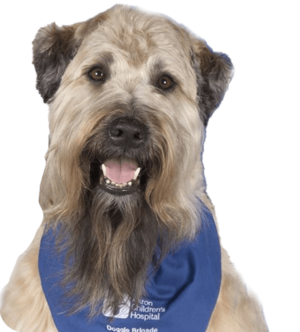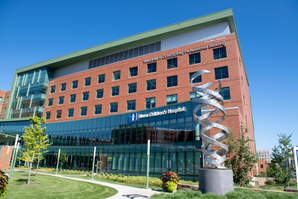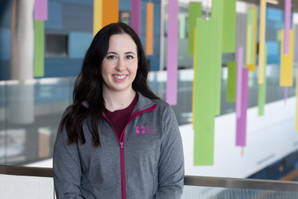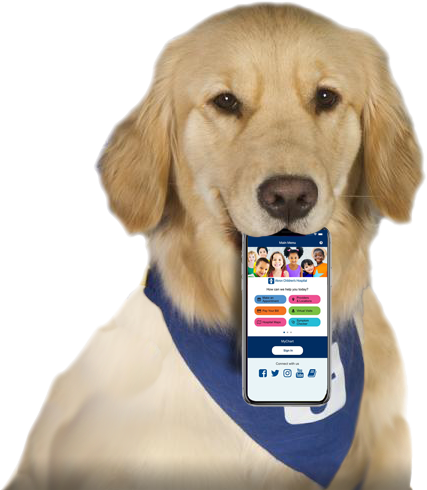Brachial Plexus Treatment Program

The Akron Children's team of pediatric specialists collaborates to treat children of all ages with brachial plexus injuries. The brachial plexus is a network of nerves in the neck that controls movement and feeling in the shoulder, arm and hand. Brachial plexus palsy happens when these nerves have been damaged, causing paralysis of the arm.
Learn more...Department: 330-543-4669
About Brachial Plexus Treatment
Brachial Plexus Birth Injuries
Brachial plexus birth injuries are one of the most common birth injuries, occurring in about 1 in every 1,000 births. While there is usually no emergency treatment needed, early diagnosis and intervention will help your child achieve the best level of function possible in his shoulder, arm and hand. About 70 percent of children with brachial plexus birth injuries make a complete recovery.
We typically diagnose the injury with a simple history and physical examination, including muscle testing, standardized scoring classifications, and observation of functional movement. We sometimes recommend other tests such as x-rays, ultrasounds, MRI studies, or motion analysis studies, depending on the clinical situation and recovery.
Caring for a child with a brachial plexus injury affects the whole family. Managing multiple appointments and navigating the healthcare system can feel overwhelming at times. Our social workers are available to help you through this process. Services include supportive counseling, assistance with transportation and travel accommodations, help with questions about health insurance or other medical and therapy services.
Our providers are involved with research projects to improve understanding of brachial plexus birth injuries and their treatment. Studies are being done at Akron Children’s, as well as in collaboration with other institutions. As we learn more about children with brachial plexus injuries, these findings are presented at national and international meetings and published in medical journals so that everyone taking care of children with brachial plexus birth injuries benefits from our new information. If you would like to learn more or see if your child can participate in one of our research studies, please ask your care team for more information.
NeuroDevelopmental Science Center
Akron Children's NeuroDevelopmental Science Center, AkronConsidine Professional Building
215 West Bowery Street
Level 4
Akron, Ohio 44308
Fax: 330-543-8054
Map & directions
More about this location...
Appointments: 330-543-2778
Department: 330-543-8050
Open Clinical Studies
Assessment of reachable workspace in patients undergoing elbow or shoulder surgery
Use of markers with motion capture to see the space patients can reach with their hands before and after undergoing elbow or shoulder surgery.
More about this studyAssessment of reachable workspace in patients with Brachial Plexus (BP) or Cerebral Palsy (CP)
Use of markers with motion capture to see the space patients can reach with their hands to discover deficits in patients with Cerebral Palsy or Brachial Plexus.
More about this studySpecialized Treatment
After diagnosis, your child will follow our brachial plexus injury treatment plan with specific assessments and interventions at different stages of their life, depending on the recovery of the injured nerves in the arm. If children are to recover strength completely, they usually do so within the first 3 months.
Most children with brachial plexus birth injuries do not require surgery. However, early and repeated examinations are important to decide if your child would benefit from nerve surgery or other procedures to improve shoulder, elbow, wrist, or hand function. Additionally, occupational therapy and home stretching exercises are very important for infants and children with brachial plexus birth injuries.
Your first visit may take place in one of our provider’s individual clinics to confirm the diagnosis of a brachial plexus injury.
At your brachial plexus clinic visit, you and your child will be seen by our team of providers. The team includes surgeons with expertise in orthopedic and peripheral nerve surgery, a physical medicine and rehabilitation doctor with expertise in brachial plexus injuries and other nerve conditions, occupational therapists experienced in treating brachial plexus injuries, and a social worker who can help coordinate care services. For young children, toys and other interactive strategies are utilized to help make your child feel comfortable. This allows us to observe how your child uses their arms in addition to a typical physical exam. Sometimes a diagnostic study such as an ultrasound can be performed during the visit if it is needed. Additionally, we will help coordinate therapy services near your home and any other care that may be of benefit to your child.
View publications by our staff.
Brachial Plexus Birth Injuries
Brachial plexus birth injuries are one of the most common birth injuries, occurring in about 1 in every 1,000 births. While there is usually no emergency treatment needed, early diagnosis and intervention will help your child achieve the best level of function possible in his shoulder, arm and hand. About 70 percent of children with brachial plexus birth injuries make a complete recovery.
Traumatic Brachial Plexus Injuries
Traumatic brachial plexus injuries may occur after motor vehicle collisions or other injuries. Evaluation includes a detailed history and physical examination. Other tests such as x-rays, MRI or CT scans, or electrodiagnostic studies may be used as well. Treatment is multi-disciplinary and often includes occupational or physical therapy and other non-surgical treatments. It is helpful to evaluate patients early and over time to decide if surgery is recommended or not.
Other Brachial Plexus Conditions
The brachial plexus can also be affected by viral illness or autoimmune conditions. These may include acute flaccid myelitis (AFM), transverse myelitis, neuralgic amyotrophy (Parsonage-Turner syndrome) and other conditions. A history and physical examination, as well as other tests such as MRI studies, electrodiagnostic studies, or laboratory tests, help make the diagnosis. Depending on the diagnosis and natural recovery, surgery may or may not be recommended in addition to other treatments such as occupational therapy or medical treatments.
Programs and Clinics
Conditions and Treatments:
brachial plexus injury


















